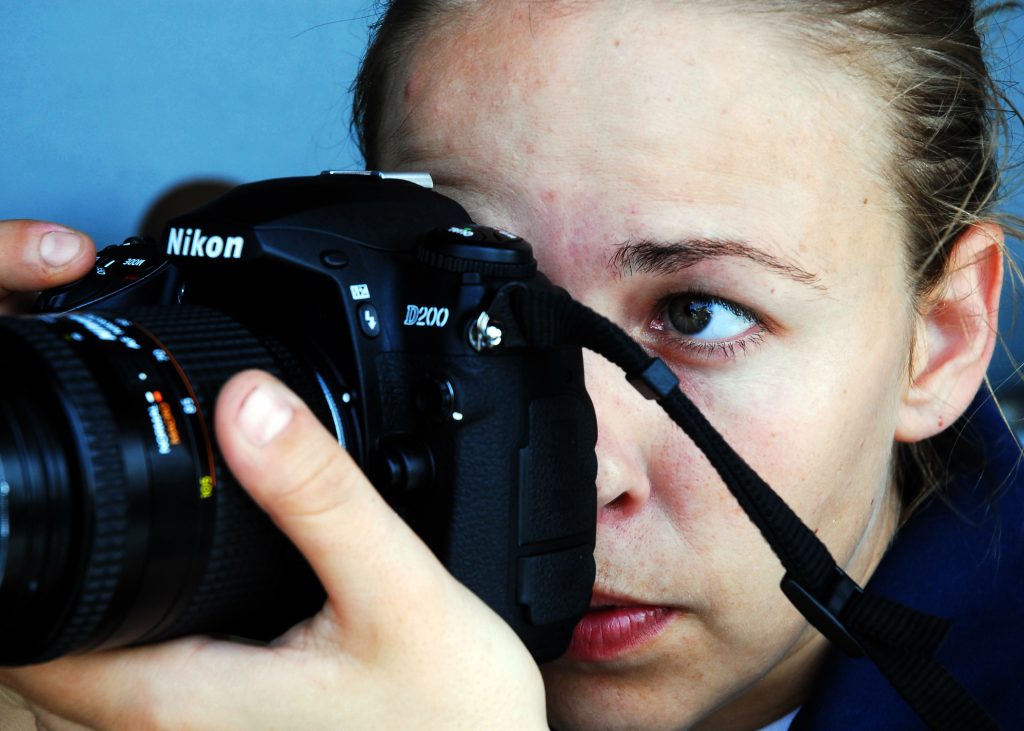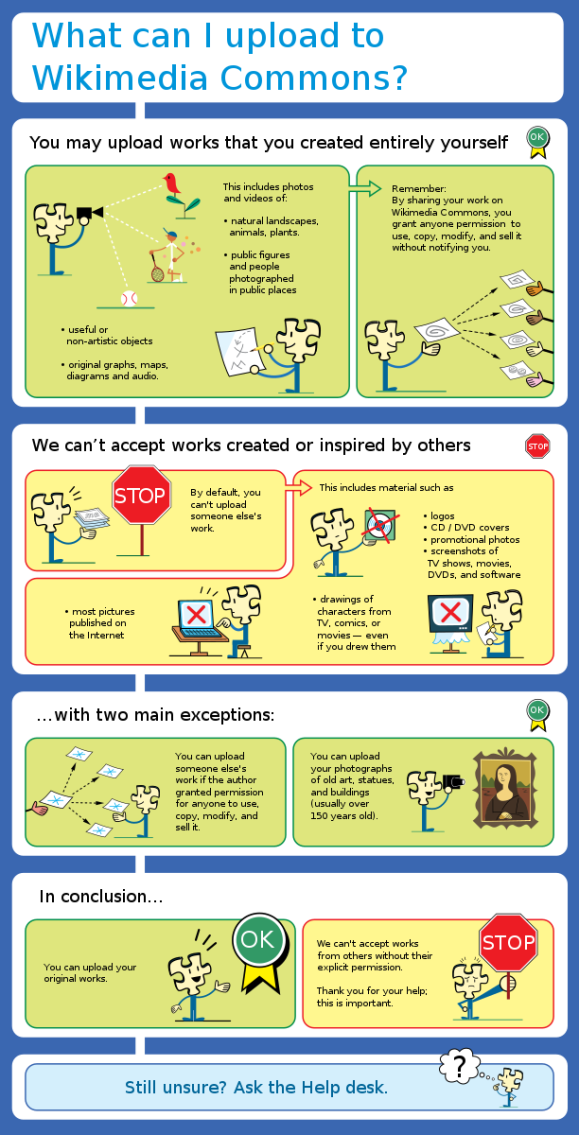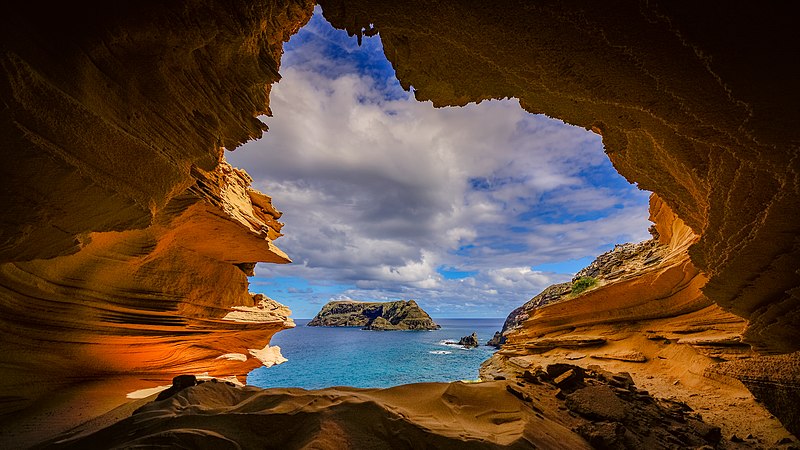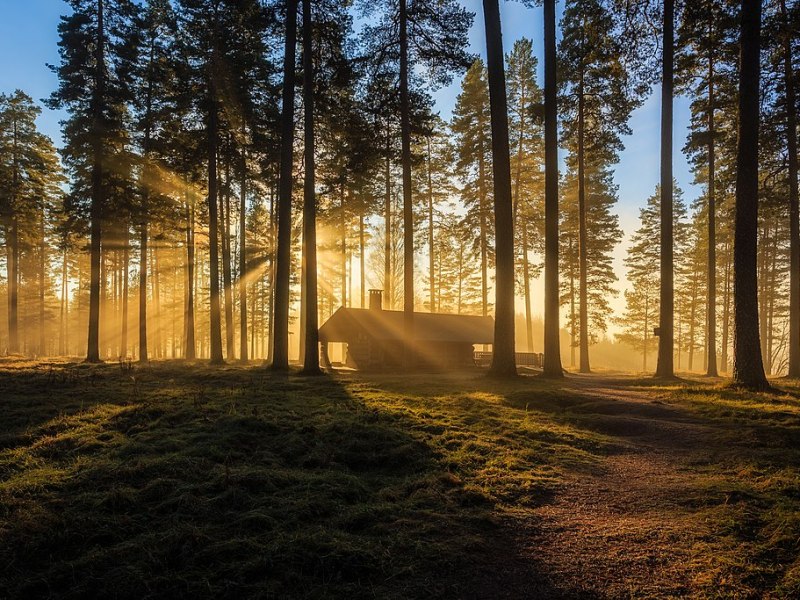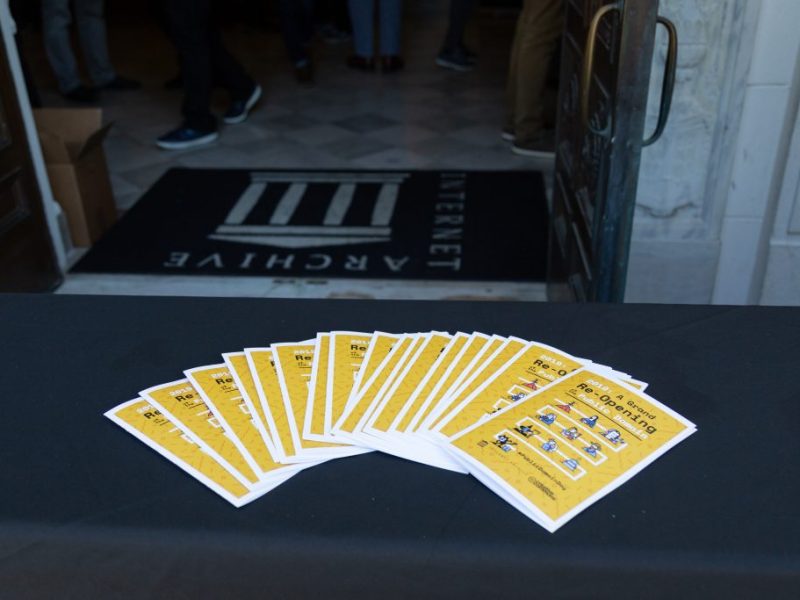Most people in the world have never heard of Wikimedia Commons. They have no idea what it is, who is behind it, and why it exists.
And that’s surprising, as it is the photo and media site that helps power Wikipedia.
Most of the pictures you see on the world’s largest encyclopedia come from Commons, which at 43 million files is one of the world’s largest freely licensed media repositories for “educational media content,” as defined in its scope. (This means that most media files you’d like to upload are acceptable—but not all.) Commons has its own distinct community of volunteer editors who take and upload photographs, enforce that scope, search for copyright violations, and more.
Today, we’re going to run through a little text tutorial about how you (yes, you!) can upload your own content to Commons, donating it to the sum of all knowledge.
Note: This tutorial will focus on uploading photos that you’ve taken, but you can also upload images that are demonstrably freely licensed, as in copyright, or in the public domain. It’s easiest to do this from a computer—in fact, I wouldn’t recommend trying it through a phone unless you’re using the Commons Android app.
———
1: Your first step should be to head over to Commons’ upload wizard. It’ll ask you to log in; please create an account.[1]
———
2: Read the poster that appears. Most photos that you’ve taken are going to be okay, but there are quirks in national laws—like freedom of panorama. (Here’s one example.)
———
3: Move on to the “upload” step. Here, you’ll select the files that you’d like to donate. Again, please make sure that they are only photos that you’ve taken and own the copyright to.
———
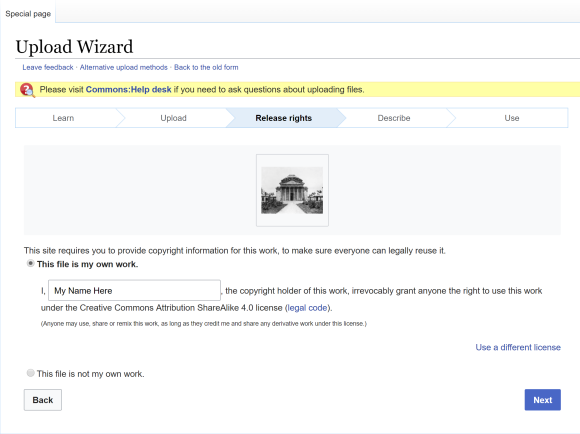
4: We’re up to “release rights.” Select “This file is my own work”/”These files are my own work.” The wizard will default to the CC BY-SA 4.0 license, drawn up by our friends over at Creative Commons.
CC BY-SA 4.0 essentially means that anyone can use your photo for any reason as long as they attribute the photographer (you) and share it under the same license. All of the text on Wikipedia is available under a similar license.
While CC BY-SA is a pretty standard release for Commons photographers, you’re also free to make the license less restrictive via clicking “Use a different license.” You can just require attribution to you (“Attribution,” also known as “CC BY”), disclaim all rights entirely (“CC0”), or use a different license, which I won’t cover here for simplicity.
———

5: We’ve hit the “describe” phase! Here, you’ll provide a file name for what you’ve uploaded (please be succinct yet thorough!), describe what is happening in the photograph, and add categories.
Categories are incredibly important. Until structured data is finished, they’re the primary way of discovering imagery on Commons.
Generally, you’ll be able to guess what categories you’ll need. For example, a photo of the Mackinac Bridge will go in the “Mackinac Bridge” category.
A big exception is for plants and animals, as they can be listed under their Latin names. Open a new tab, if needed, to find the right ones. (Search Commons with “Category:” in front.)
———
6: Once all of the fields are filled in, Hit “next”—and you’re done! You’ve helped expand the sum of the world’s knowledge. Thank you!
———
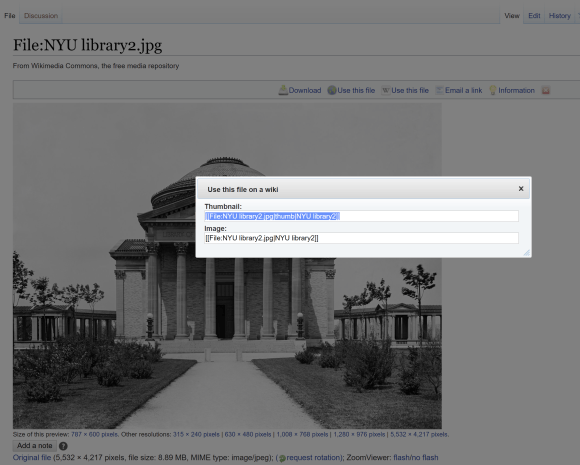
Now, here’s a bonus round. Do you think that photo you just uploaded is good enough to be added into a Wikipedia article? If so, go to your image’s new page on Commons on a computer. See that “Use this file” with the little Wikipedia icon at the top? Click there, and copy the thumbnail text.
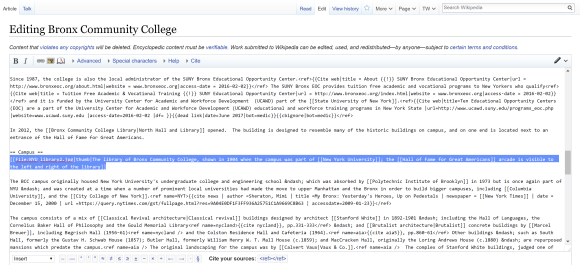
Next, go to a relevant Wikipedia article. Click “edit” at the top. Paste that text into the article in a useful location—it should look a little like the image above. That bit at the end is a caption; you should try to add something relevant.
Once that’s done, click save, and admire your work!
Ed Erhart, Senior Editorial Associate, Communications
Wikimedia Foundation
This blog post was originally created as one of several “tweetstorms” put out by the @Wikipedia Twitter account (1, 2, 3). The image being “uploaded” is an old public domain photograph from the Library of Congress (restored by a volunteer editor); it is used here only as an example, and is most definitely not my own work.
